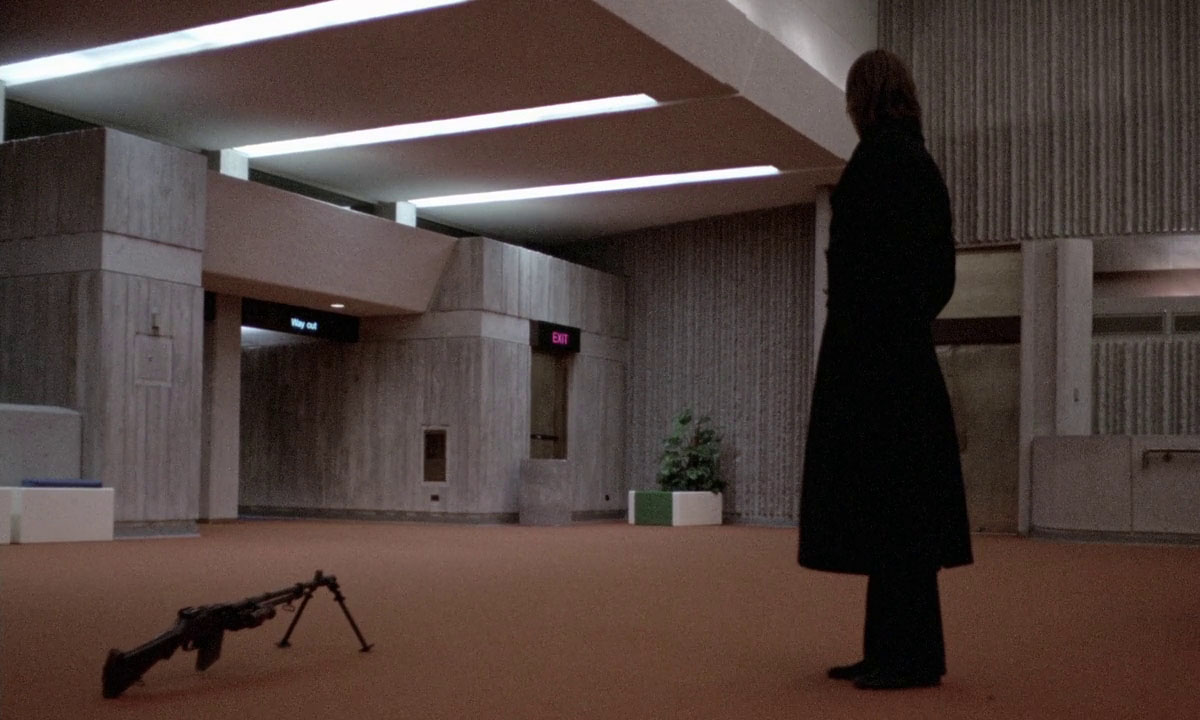L’emission a deja commence (2023, Bertrand Mandico)
Puppet people talk about truth in media and introduce a series of pissing-fruit cartoons. How do you explain this sort of thing to potential investors?
–
The Last Cartoon (2022, Bertrand Mandico)
Kind of partly a cartoon – some abstract brightly-colored patterns – but the performance-art people take over, narrating in French and English about conflicting futures of cinema.
–
Four Unloved Women Adrift… (2023, David Cronenberg)
The autopsy mannequins make heated moaning sounds.
Mostly close-ups, only showing the full scene at the end.

–
The Menacing Eye (1960, Jerzy Skolimowski)
If my first short had been a stylish silent 2-minute backstage knife-throwing drama, I would also have grown up to become Jerzy Skolimowski.

–
Little Hamlet (1960, Jerzy Skolimowski)
A small group hanging around a half-demolished building plays out a silent slapstick story with musical narration which is sort-of a loose version of Hamlet.

–
The Miu Miu Affair (2024, Laura Citarella)
Meant to be another fashion ad like the Luca and the Lynch, but LC makes a Trenque Lauquen spinoff, a mystery about a missing fashion model that gets increasingly hazy and vague. it’s not great exactly, but it’s great for one of these.

–
Let Your Heart Be Light (2016, Romvari & Campbell)
She trims the tree while half-watching Meet Me in St. Louis on a laptop and drinking from her Chantal Akerman mug, then switches to a mix of trad-xmas songs before Sophy comes over to hang out.

–
I’m Hungry, I’m Cold (1984, Chantal Akerman)
The one who looks familiar is Maria de Medeiros (The Saddest Music in the World), the less hungry one is Pascale Salkin of Gang of Four. The most charming and fast-paced Akerman movie since Saute me ville?

–
and some auteur music videos…
PJ Harvey – I Inside The Old I Dying (Cocina & Leon)
The Wolf House team creates the illusion of a days-long journey within a single room, so cool. Man gets chomped to death by a beast, man’s dog grabs one of his bones and buries it, it grows into a tree.

New Order – Blue Monday (Breer & Wegman)
The main things happening here are (1) Breer animation, (2) a dog balancing on furniture, (3) the band members being bothered by floating tennis balls. These things get integrated in fun ways (e.g. the band members watch a flipbook of Breer’s drawings of the dog).


The Breeders – Divine Hammer (Richard Kern)
The focus is on Kim pulling poses indoors, and the other three have a minor thread going on a tour of strip clubs. They should’ve cut out the shots of Kim as the Flying Nun.

The Roches – Hammond Song (Lewis Klahr)
Lewis does his clip-art mashup thing. Lucky me to find this right after discovering the group – I’ve been playing their debut album this week. He made this forty years after the song came out.

Mystical Weapons – Colony Collapse Disorder (Martha Colburn)
Instrumental guitar rock by Sean Lennon and Greg Saunier, the only song here I didn’t already know. More clip-art, the religious and planetary icons giving flashbacks to the Harry Smith shorts. Faster cut than Klahr and with added digital glitch edits (or else my copy was defective).


































